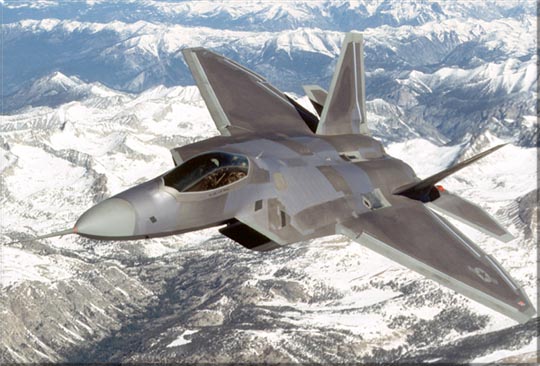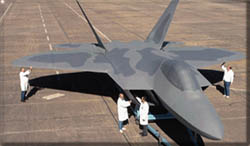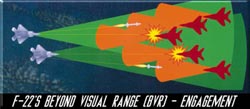
The leading and trailing edges of the wing and tail have identical sweep angles (a design technique called planform alignment). The fuselage and canopy have sloping sides. The vertical tails are canted. The engine face is deeply hidden by a serpentine inlet duct and weapons are carried internally.
Reduction of radar cross section of nozzles Is also very important, and is complicated by high material temperatures. The approach taken at Lockheed is to use ceramic materials. The ceramics may be either lightweight, parasitic sheets mounted on conventional nozzle structures or heavier structural materials forming saw-toothed edges.



